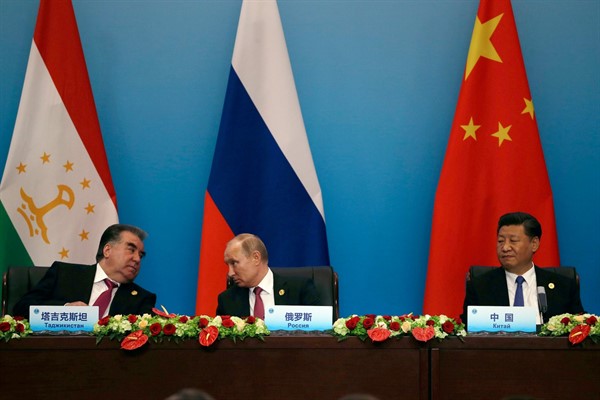At the opening of the World Health Assembly in mid-May, Chinese leader Xi Jinping announced his country would spend $2 billion over two years to help other countries fight the coronavirus pandemic. President Donald Trump, meanwhile, had already announced the U.S. would halt funding to the World Health Organization. His administration began the process of withdrawing from the WHO in early July.
A week after Xi’s announcement, a 14-person medical team from China arrived in Tajikistan, which has had over 7,000 confirmed cases of COVID-19, including 56 deaths. The Chinese squad brought 9 tons of medical equipment, bringing its total aid to Tajikistan to over 20 tons. China has outshined the comparably modest U.S. contribution of $2.7 million in assistance.
Tajikistan and its neighbors offer a snapshot of a world in which China, not the United States, is the primary provider of public goods like long-term financing and development assistance, as well as the primary guarantor of stability. As the U.S. prepares to withdraw from Afghanistan and retrenches globally, it is decreasing its investments in the security of the post-Soviet republics of Central Asia. Despite a new strategy for the region that was unveiled earlier this year, U.S. spending on security assistance in Central Asia during the 2020 fiscal year is just $6 million so far, a stark contrast to the all-time high of $207 million in 2010. China, meanwhile, has been steadily expanding its footprint in a region where Russia has historically been the major external player.

